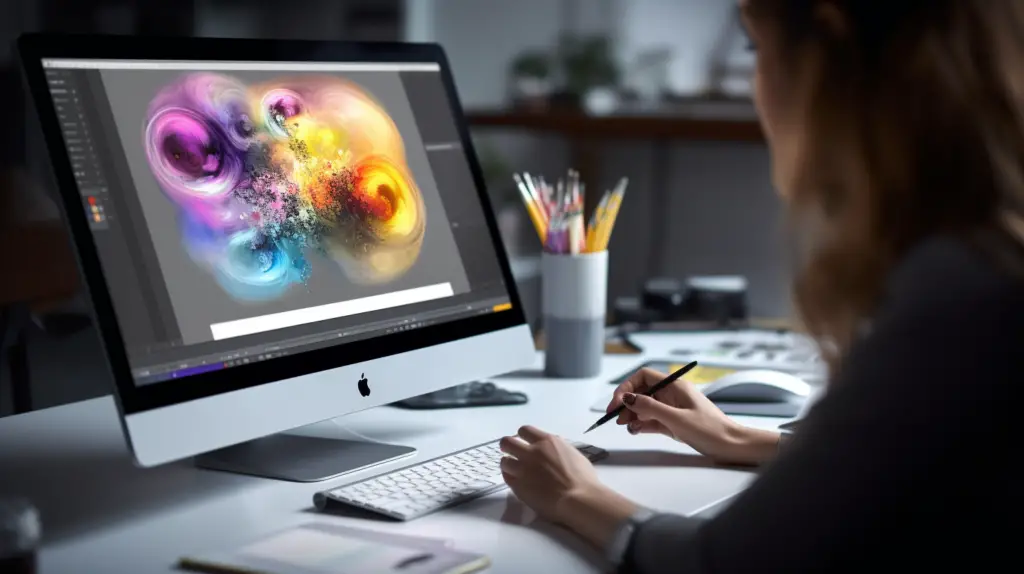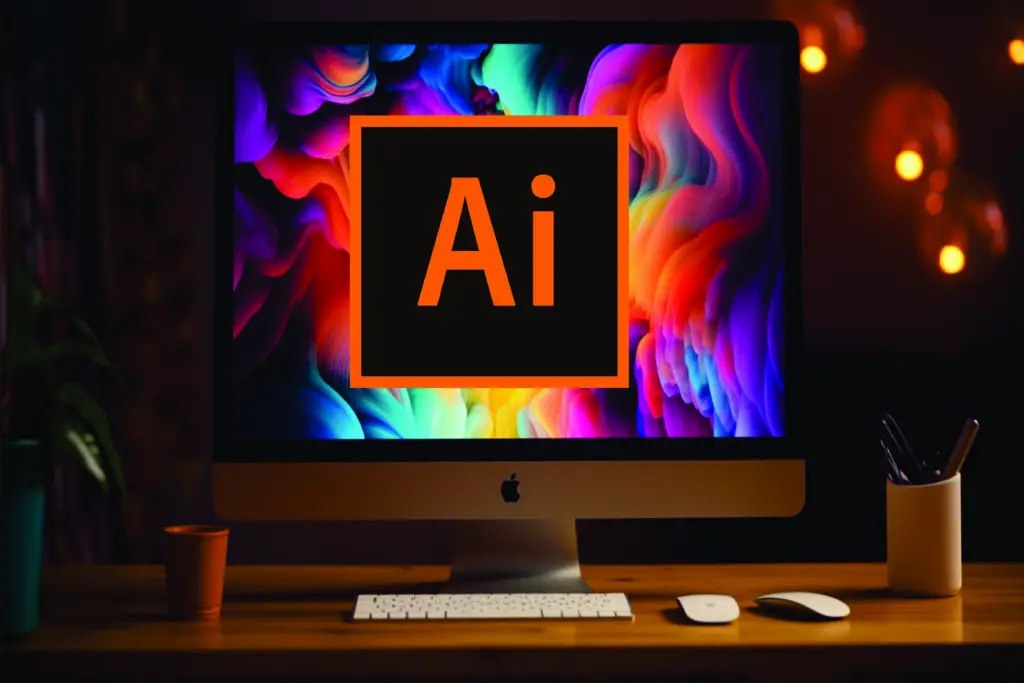Last Updated on January 15, 2024 by Lori Pace
You’re here because you want to know how to become a graphic designer that (and it’s really the best part) works from home.
Since you’re here, you probably already know what the job of a graphic designer entails. So, let’s start by answering some of your burning questions about becoming a work-from-home graphic designer.
Your Most Pressing Questions
Let’s start with the most obvious one:
How much can you earn as a self-employed graphic designer?
According to the Bureau of Labor Statistics, the average hourly pay for a freelance graphic designer in 2020 was approximately $25.66. This equates to around $53,380 a year.
However, as with all freelancing jobs, many factors influence the amount of pay you’ll receive as a self-employed graphic designer.
Many freelance graphic designers get paid up to $100 per hour. Still, the reality is that your income is largely determined by the number of clients you can secure and how much you can negotiate in terms of pay.
The type of industry you work in can also play a role in the amount of money you can earn.
So, for example, graphic designers who work in advertising, public relations, or another related field tend to earn more than those who work in print media since newspapers and magazines are slowly becoming novelties in the twenty-first century.
Now for the most important question:
What kind of skills or qualifications do you need?
Thanks to the development of online tools and apps, you don’t necessarily need a formal education to begin working as a self-employed graphic designer.
You will, however, need to have a few of the following skills if you’re looking to pursue this a full-time career:
- Computer software skills
- Creativity and innovation
- An understanding of design principles
- Attention to detail
- Time management
- Organization skills
- An ability to identify trends
- People skills
- The ability to visualize concepts and ideas

Remember that your skills and experience are the two main things that will determine whether or not people will hire you at the end of the day. Your work will speak for itself.
How to Become a Graphic Designer Working from Home:
Now that we’ve covered the basics, this next section offers a guide on becoming a work-from-home graphic designer in a few easy steps.
-
Decide on the type of service(s) you want to offer
Before anything else, you need to decide what type of designer you are. From there, you can decide on the type of services you want to offer.
To give you an idea, here are some graphic design services that are currently in high demand:
- Apparel and merch design
- Logo design and branding
- UX/UI design
- Digital illustration
- Web design
- Data visualization
There are countless others, but choosing to specialize in a particular design area like those mentioned above is a surefire way to secure clients and, most importantly, work.
-
Decide on your hourly or daily rate.
Deciding how much to charge your clients can be tricky. But you’ll need to be realistic about it to make freelance graphic design a viable career option.
A good rule of thumb is calculating your monthly expenditure and using this as a reference point when deciding on your rates. Also, consider that you can expect to work around 40 hours a week unless your goal is to work part-time. This way, you should generate enough income to cover your everyday living expenses.
Also, bear in mind that you may have to accept freelance work that doesn’t pay as much initially, but this needs to be kept to a minimum so that you don’t end up putting yourself at a financial disadvantage.
-
Learn the tools of the trade
There are many essential tools and software programs that you’ll have to master to become a successful work-from-home graphic designer.
Some of the basic ones you’ll need to know how to use include:

- Photoshop (for photography, graphics, and pixel-based artwork)
- Adobe Illustrator (for branding, illustration, and vector artwork)
- Adobe InDesign (for web and print layouts, publications, and documents)
Of course, the type of software programs you learn will also depend on the area of design that you intend to work in.
-
Create an online portfolio of work
It goes without saying that landing clients are much easier when you can show them what you can do.
This is where having a portfolio of work comes in useful. You can create one on a personalized website available for anyone to view.
Creating a website can also be particularly helpful when you’re first starting and have nothing to show potential clients. This is because the design of your website can act as an example of the kind of work you can produce.
-
Put yourself out there.
Sure, having a carefully curated portfolio of work and an attractive website are great ways to market yourself as a freelance graphic designer.
But it will take more than just that if you want to become truly successful in this career.
You’ll want to make yourself visible on various social media platforms, such as Twitter and Instagram, to promote your work.
-
Build your network
Some of the best jobs and opportunities you can get are usually through word-of-mouth.
However, this day and age don’t necessarily mean meeting people in person. These days, massive online communities exist on platforms like Facebook and LinkedIn, where individuals from the same profession can connect to share contacts and resources.
In addition to networking in person and joining an online community, some freelance websites will allow you to bid for available jobs and where clients can contact you directly.
-
Maintain positive relationships with clients
Please make no mistake, meeting (or even better, SURPASSING) your clients’ expectations is the key to succeeding in this career, so ensure that you treat them with the utmost care.
Doing so will earn you some glowing recommendations and guarantee you a continuous flow of work. In time, it can even lead you to expand your business as word gets out about the quality of service that you provide.
The golden rule is: never underestimate the importance of a job well done.
-
Set up as a business or freelancer
It’s important to get set up correctly as a freelancer in preparation for receiving your first paycheck. This means calculating your taxes and being aware of potential liabilities and all the other legalities involved in running your own business.
And that’s it – you’re all set.
It will take a lot of perseverance and hard work. Still, with the right attitude and the step-by-step guide above, you should be well on your way to enjoying a fulfilling career as a work-from-home graphic designer.

